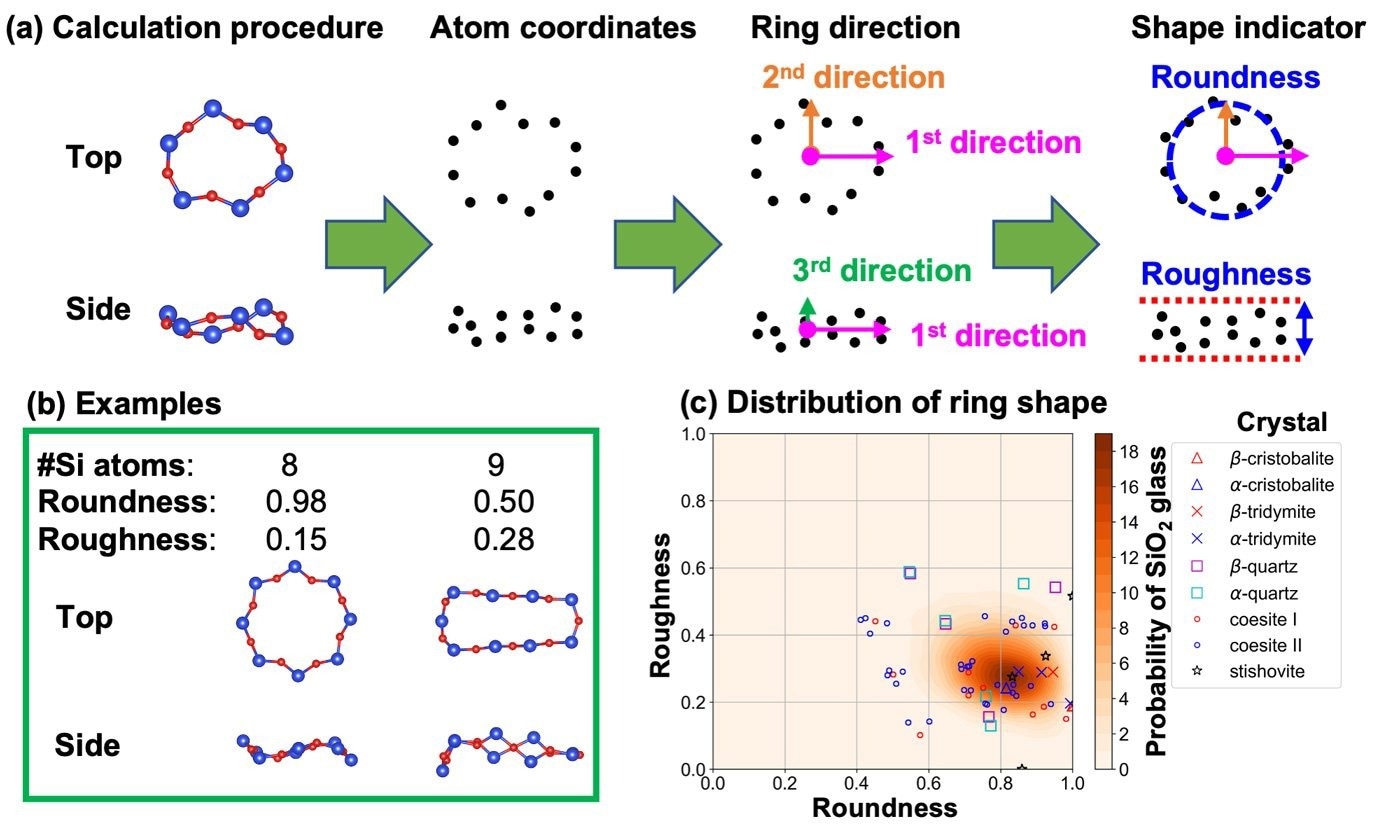Glass is a basic material that is used for many purposes, such as computer and smartphone screens and home insulation. Its atomic configuration's disorganized structure, however, continues to elude scientists despite its extensive use throughout human history, making it difficult to comprehend and regulate. It also makes the design of effective, useful glass-based products challenging.

Ring shape indicators: (a) Computation procedure, (b) Examples of indicators on Silica (SiO2), (c) Distribution of shape indicators in silica glass and nine crystals. Image Credit: Motoki Shiga et al.
A group of researchers has concentrated on ring shapes in the chemically connected networks of glass to learn more about the structural regularity concealed in glassy materials.
The team, which includes Professor Motoki Shiga from the Unprecedented-scale Data Analytics Center at Tohoku University, developed new metrics for measuring the structural symmetries and three-dimensional structure of the rings: “roughness” and “roundness.”
The researchers found a mixture of rings exclusive to glass and ones that matched the rings in the crystals by using these markers to pinpoint the precise number of representative ring shapes in crystalline and glassy silica (SiO2).
In addition, by figuring out each ring’s direction, the researchers created a method for measuring the spatial atomic concentrations surrounding rings.
They demonstrated that the atomic configuration is not uniformly regulated in all directions around the ring, a phenomenon known as anisotropy, and that the structural ordering associated with this ring-originated anisotropy is congruent with experimental evidence, such as the SiO2 diffraction data.
It was also discovered that, despite the appearance of an uneven and chaotic atomic arrangement in glassy silica, there were certain regions where the arrangement of atoms followed a certain level of order or regularity.
The structural unit and structural order beyond the chemical bond had long been assumed through experimental observations but its identification has eluded scientists until now. Furthermore, our successful analysis contributes to understanding phase-transitions, such as vitrification and crystallization of materials, and provides the mathematical descriptions necessary for controlling material structures and material properties.
Motoki Shiga, Professor. Unprecedented-scale Data Analytics Center, Tohoku University
Shiga and his colleagues will employ these tools in the future to develop procedures for researching glass materials that are data-driven, such as machine learning and AI.
On November 3rd, 2023, their findings were published open access in the journal Communication Materials.
Journal References
Shiga, M., et al. (2023) Ring-originated anisotropy of local structural ordering in amorphous and crystalline silicon dioxide. Communication Materials. doi:10.1038/s43246-023-00416-w.